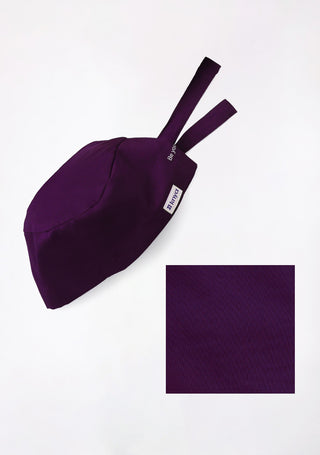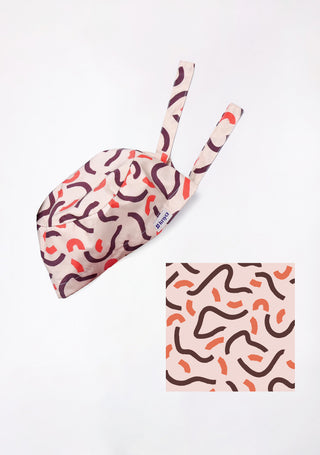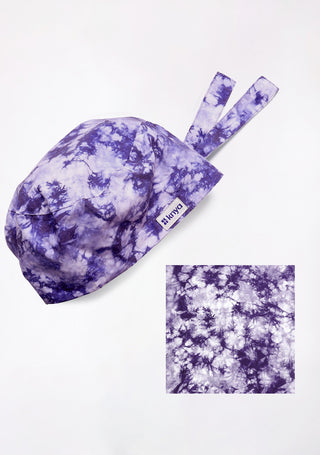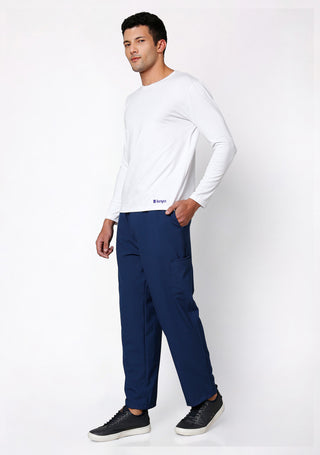In the fast-paced and demanding world of healthcare, cleanliness, professionalism, and durability are non-negotiable when it comes to uniforms. Embroidered healthcare uniforms, including medical scrubs, doctor lab coats, surgical caps, and underscrubs, add a touch of personalization and brand identity, making them a crucial aspect of a professional appearance. However, without proper care, embroidery can fade, fray, or become damaged over time, affecting the uniform’s longevity and overall appeal.
Proper maintenance of embroidered uniforms ensures that they remain in pristine condition while upholding their professional look. Whether you're a medical student starting your journey or an experienced healthcare professional, following essential embroidery care practices can help extend the life of your workwear. This guide will walk you through the best methods to clean, store, and maintain your embroidered doctor coats, medical scrubs, and other healthcare apparel.
Discover the best lab coat designed for comfort and protection. Shop from here.
Why Proper Embroidery Care Matters
Taking care of embroidered healthcare uniforms is not just about aesthetics; it also plays a role in hygiene and durability. Here’s why embroidery care is crucial:
-
Prolongs the Uniform’s Lifespan: Embroidered uniforms are an investment. Proper care ensures they last longer without fraying or fading.
-
Maintains a Professional Appearance: A well-maintained uniform reflects positively on a healthcare professional’s image and contributes to a clean and organized work environment.
-
Protects Fabric and Thread Quality: Incorrect washing or drying techniques can cause shrinkage, fraying, or color bleeding, impacting both the fabric and embroidery quality.
-
Ensures Hygiene Standards: Healthcare settings demand strict hygiene. Proper washing techniques eliminate germs while preserving the embroidery.
By following the right care techniques, your scrubs can remain fresh, vibrant, and comfortable throughout long shifts.
For our male healthcare professionals, we offer a wide range of comfortable and stylish scrubs for men, designed to enhance both comfort and professional image
Essential Embroidery Care Tips for Healthcare Uniforms
1. Follow Manufacturer’s Instructions
Before washing any embroidered doctor coat or medical scrub, always check the care label provided by the manufacturer. Different fabrics and embroidery threads require specific care techniques.
-
Some materials, such as polyester blends, can withstand slightly higher temperatures, while others, like cotton scrubs, may require cold water.
-
Avoid assumptions—always follow specific temperature and detergent recommendations.
2. Pre-Treat Stains Immediately
Healthcare professionals often encounter spills and stains from body fluids, chemicals, and medications. Addressing stains promptly prevents them from setting into the fabric and affecting the embroidery.
-
Use a mild stain remover or a gentle detergent.
-
Dab the stained area lightly—do not rub, as this can damage embroidery threads.
-
Let the stain remover sit for a few minutes before washing.
3. Turn Uniforms Inside Out Before Washing
To protect delicate embroidery threads, turn embroidered scrubs, lab coats, and surgical caps inside out before placing them in the washer.
-
This helps prevent snags and friction from other garments.
-
It also minimizes color fading and thread loosening over time.
4. Wash Using a Gentle Cycle and Cold Water
Embroidery is delicate, and washing healthcare uniforms using harsh settings can damage the threads.
-
Always use a gentle cycle to reduce agitation.
-
Cold water prevents color bleeding and fabric shrinkage.
-
Mild detergents designed for medical scrubs or delicate fabrics are ideal.
5. Avoid Bleach and Harsh Chemicals
Bleach and strong detergents can weaken embroidery threads, causing them to fray or fade prematurely. Instead:
-
Use mild, color-safe detergents to protect both the fabric and embroidery.
-
Opt for natural alternatives, such as baking soda or vinegar, to remove odors without damaging embroidery.
6. Dry Uniforms with Care
Improper drying can cause embroidery to shrink or warp. Avoid using high heat settings when drying embroidered scrubs for men or scrubs for women.
-
Air-drying is the best option to preserve embroidery integrity.
-
If using a dryer, choose the lowest heat setting.
-
Lay uniforms flat or hang them to dry instead of wringing them out.
7. Ironing Embroidered Healthcare Uniforms
If ironing is required, do so carefully to prevent damage to the embroidery.
-
Turn uniforms inside out before ironing.
-
Use a low-heat setting.
-
Avoid ironing directly over embroidered areas; instead, place a thin cloth between the iron and the embroidery.
8. Store Uniforms Properly
How you store your embroidered uniforms can affect their longevity.
-
Store doctor white coats, scrubs, and surgical caps in a cool, dry place.
-
Use padded hangers to maintain shape.
-
Keep uniforms away from direct sunlight to prevent color fading.
9. Address Loose Threads Immediately
If you notice any loose embroidery threads, avoid pulling them. Instead:
-
Trim them carefully with scissors to prevent further unraveling.
-
If significant damage occurs, consider professional repair services.
10. Rotate Uniforms Regularly
Wearing the same embroidered medical scrubs daily can accelerate wear and tear.
-
Keep multiple sets of uniforms to alternate between shifts.
-
This prevents excessive washing and extends each uniform’s lifespan.
Conclusion
Embroidered healthcare uniforms play an essential role in creating a professional, cohesive look while ensuring comfort and durability. By following these embroidery care tips, healthcare professionals can extend the life of their medical scrubs, doctor coats, and surgical caps, maintaining their pristine appearance and functionality.
Proper washing, drying, ironing, and storage techniques help preserve embroidery details, preventing premature damage or fading. Investing in high-quality healthcare uniforms and caring for them correctly ensures they remain a reliable part of your professional wardrobe for years to come.













